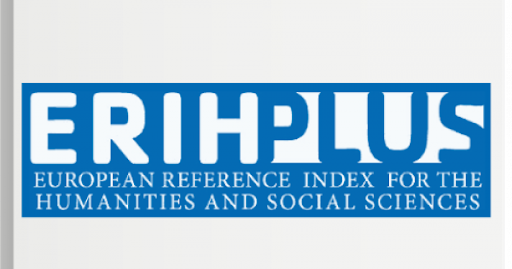Comparación del grado de implementación del principio IOSCO “la regulación promoverá la transparencia en la negociación” en Colombia y la Unión Europea
Comparison of the Level of Implementation of the IOSCO Principle “Regulation Should Promote Transparency of Trading” in the European Union and Colombia

Esta obra está bajo una licencia internacional Creative Commons Atribución-NoComercial-SinDerivadas 4.0.
DERECHOS RESERVADOS DE AUTOR
Todo documento incluido en la revista puede ser reproducido total o parcialmente, siempre y cuando se respete su contenido original, se cite la fuente y se use con fines académicos no comerciales. Misión Jurídica y su contenido se encuentra protegido bajo una Licencia Creative Commons Atribución-NoComercial-SinDerivar 4.0 Internacional.

Misión Jurídica por Misión Jurídica se distribuye bajo una Licencia Creative Commons Atribución-NoComercial-SinDerivar 4.0 Internacional.
Basada en una obra en http://unicolmayor.edu.co/publicaciones/index.php/mjuridica/index.
Permisos que vayan más allá de lo cubierto por esta licencia pueden encontrarse en http://unicolmayor.edu.co/publicaciones/index.php/mjuridica/index.
Mostrar biografía de los autores
Este artículo evalúa y compara el grado de implementación del principio IOSCO en relación con la transparencia del intercambio en el marco regulatorio de la Unión Europea y de Colombia. Con tal fin, el autor aplica la metodología establecida por IOSCO para evaluar el grado de implementación del principio mencionado en el marco regulatorio de las jurisdicciones mencionadas. Sin embargo, el alcance de la investigación es limitado para estudiar el grado de transparencia de los intercambios ejecutados en la bolsa de valores.
Visitas del artículo 20 | Visitas PDF 16
Descargas
- ESMA, Questions and Answers On MiFID II and MiFIR investor protection and intermediaries topics, (2019).
- ESMA, Questions and Answers On MiFID II and MiFIR transparency topics (2019).
- ESMA, OPINION OTC derivatives traded on a trading venue, (2017).
- Financial Conduct Authority, Markets in Financial Instruments Directive II Implementation - Consultation Paper I, (2015).
- ESMA, Equity Transparency Calculation Results, (2019).
- ESMA, Consultation Paper MIFID II/MIFIR, (2014).
- ESMA, Non-Equity Transparency Calculation Results, (2019).
- ESMA, Response Form to the Consultation Paper “MiFID II/MiFIR review report on the development in prices for pre- and post-trade data and on the consolidated tape for equity instruments”, (2019).
- ESMA, Discussion Paper MIFID II/MIFIR, (2014).
- ESMA, Guidelines Transaction reporting, order record keeping and clock synchronisation under MiFID II, 2016.
- OECD, Colombia: Review Of The Financial System, (2016).
- Association for Financial Markets in Europe and KPM, MiFID II / MiFIR post-trade reporting requirements, (2017).
- IOSCO, Methodology For Assessing Implementation of the IOSCO Objectives and Principles of Securities Regulation, at 13 (2017).
- IOSCO, Methodology For Assessing Implementation of the IOSCO Objectives and Principles of Securities Regulation, (2011)
- IOSCO, Methodology For Assessing Implementation of the IOSCO Objectives and Principles of Securities Regulation, (2008).
- IOSCO, Methodology For Assessing Implementation of the IOSCO Objectives and Principles of Securities Regulation, (2003).
- IOSCO, Objectives and Principles of Securities Regulation, (2003).
- IOSCO, Objectives and Principles of Securities Regulation, (2010).
- IOSCO, Objectives and Principles of Securities Regulation, (2017).
- IOSCO Presidents' Committee, A Resolution of the Presidents’ Committee on IOSCO Adoption of the Objectives and Principles of Securities Regulation, (1998).
- IOSCO, Regulatory Reporting and Public Transparency in the Secondary Corporate Bond Markets, (2018).
- IOSCO, Analysis of The Application of IOSCO’s Objectives and Principles of Securities Regulation for Islamic Securities Products, (2008).
- IOSCO, Regulatory Issues Raised by the Impact of Technological Changes on Market Integrity and Efficiency, (2011).
- IOSCO, Standards Implementation Monitoring (ISIM) on Secondary and Other Market Principles, (2019).
- IOSCO, Issues Raised by Dark Liquidity, (2010).
- IOSCO, Transparency and Market Fragmentation, (2001).
- IOSCO, Transparency on Secondary Markets: A Synthesis of the IOSCO Debate, (1992).
- IOSCO, Transparency of Structured Finance Products, (2009).
- P. Asquith, T. Covert. P. Pathak, The Effects of Mandatory Transparency in Financial Market Design: Evidence from the Corporate Bond Market, (2019).
- M. Goldstein, E. Hotchkiss, E. Sirri, Transparency and Liquidity: A Controlled Experiment on Corporate Bonds. Review of Financial Studies V. 20, No. 2, (2007).
- C. Comerton, Shedding light on dark trading in Europe, (2017).
- H. Bessembinder, w. Maxwell, K. Venkataraman, Optimal Market Transparency: Evidence from the Initiation of Trade Reporting in Corporate Bonds, (2005).
- M. Petrescu, M. Wedow, Dark pools in European equity markets: emergence, competition and implications, (2017).
- D. Guzmán, and A. García, High-Frequency Trading, Mercados Fragmentados y Problemas De Regulación, Revista de Derecho Comunicaciones y Nuevas Tecnologias, No.17 (2017)
- M. Haentjens & P. de Gioia-Carabellese, European Banking and Financial Law, London: Routledge, (2014).
- J. Armour, D. Awrey, P. Davies, L. Enriques, J.N. Gordon, C. Mayer, and J. Payne, Principles of Financial Regulation, Oxford, Oxford University Press, (2016).
- León, C. y Pérez, J., Caracterización y comparación del mercado otc de valores en Colombia. Revista de Economía Institucional, ( 2014).
- Mullainathan, S and Thaler, R, Behavioral Economics, Cambridge, Nber Working Paper Series, (2000).
- Lewis, R and Schwer, M, The Effects of Transparency on Trading Profits and Price Informativeness: Evidence From Corporate Bonds, (2018).
- Benos, E, Payne, R and Vasios, M, Centralized trading, transparency and interest rate swap market liquidity: evidence from the implementation of the Dodd-Frank Act, (2018).
- Danish Financial Supervisory Authority, Transparency and liquidity Trade transparency and a well functioning market for mortgage-credit bonds, (2017).
- Madhavan, A, Porter, D, and Weaver, D, Should Securities Markets Be Transparent?, Journal of Financial Markets, Volume 8, Issue 3, (2005).
- Lee, S and Chung, J, The Effect of Market Transparency: Volatility and Liquidity in the Korean Stock Market, Review of Quantitative Finance and Accounting, (1998).
- Di Maggio, M and Pagano, M, Financial Disclosure and Market Transparency with Costly Information Processing, Forthcoming, Review of Finance, (2016).
- Green, R, Hollifield, B, and Schürhoff, N, Financial Intermediation and the Costs of Trading in an Opaque Market, Research Paper No. 130, (2005).
- Jesper Ulriksen Thuesen, Transparency in Capital Markets, (2004).
- Freyedon Ahmadi, The relationship between transparency and capital market efficiency in Iran Exchange market, (2015).
- Biais, B, and Declerck, F, Liquidity, Competition & Price Discovery in the European Corporate Bond Market, Working paper August Toulouse School of Economics, (2007).
- Farhan Hameed, Budget Transparency and Financial Markets, Working Papers In-depth research on budget transparency, participation, and accountability, (2011).
- Scalia, A, and Vacca, V, Does Market Transparency Matter? A Case Study Working paper, CGFS Publications, (1999).
- Sabatini, G and Tarola, I, Transparency on secondary markets and current regulation in Italy a survey of economic literature, Consob Commissione Nazionale Per Le Società e La Borsa Transparency On Secondary Markets and Current Regulation in Italy, (2002).
- Learner, Heidi, An Examination of Transparency in European Bond Markets, Position Paper, CFA, (2011).
- Heikki Marjosola, Regulating financial markets under uncertainty: the EU approach, European Law Review, 39 (3), (2014).
- Micossi, Stefano, 30 Years of the Single European Market, Bruges European Economic Policy Briefings 41, (2016).
- Buijze, A.W.G.J., The Principle Of Transparency In Eu Law, Utrecht University Repository, (2013).
- Rojas, Carlos and Gonzales, Alejandro, Mercado de Capitales en Colombia: Diagnostico y Perspectivas de su Marco Regulatorio, (2008).
- Fradique, Carlos, Guía Del Mercado De Valores, (2014).
- European Parliament and Council, Directive 2014/65/EU.
- European Parliament and Council, REG (EU) No 600 (2014.
- European Parliament and Council, Directive 2004/39/EC.
- European Parliament and Council, Regulation (EU) No 236/2012.
- European Parliament and of the Council, Regulation (EU) No 182/2011.
- European Parliament and Council, Regulation (EU) No 1095/2010.
- European Parliament and Council, REG (EU) No 596 (2014).
- European Parliament and Council, Directive 2014/57/EU.
- Commission Delegated Regulation (EU) 2017/590
- Commission Delegated Regulation (EU) 2017/580
- Commission Delegated Regulation (EU) 2017/574
- Commission Delegated, Directive 2017/593/EU
- Congress of Colombia, Law 964 of 2005.
- Government of Colombia, Decree 2555 of 2010.
- Financial Superintendence of Colombia, External Circular No. 029 of 2014.
- Stock Exchange of Colombia, Bylaws (2019).
- Stock Exchange of Colombia, Legal Circular (2019).
- The Government of Colombia, Organic Statute of the Financial System of 1993.
- V. Vaghela, S. Brush, EU Rules Want Light. Traders Like Dark, Periodically, Washington Post (2018).
- Redacción El Tiempo, E-trading concentra el 14 % de los negocios bursátiles. El TIempo, (19 de mayo de 2014).
- Redacción Dinero, Hacia el Mercado de Capitales, (26 de octubre de 2001).
- Presidente del Autorregulador del Mercado de Valores de Colombia, Propuestas para estimular el mercado de valores local, (14 de agosto de 2018).
















